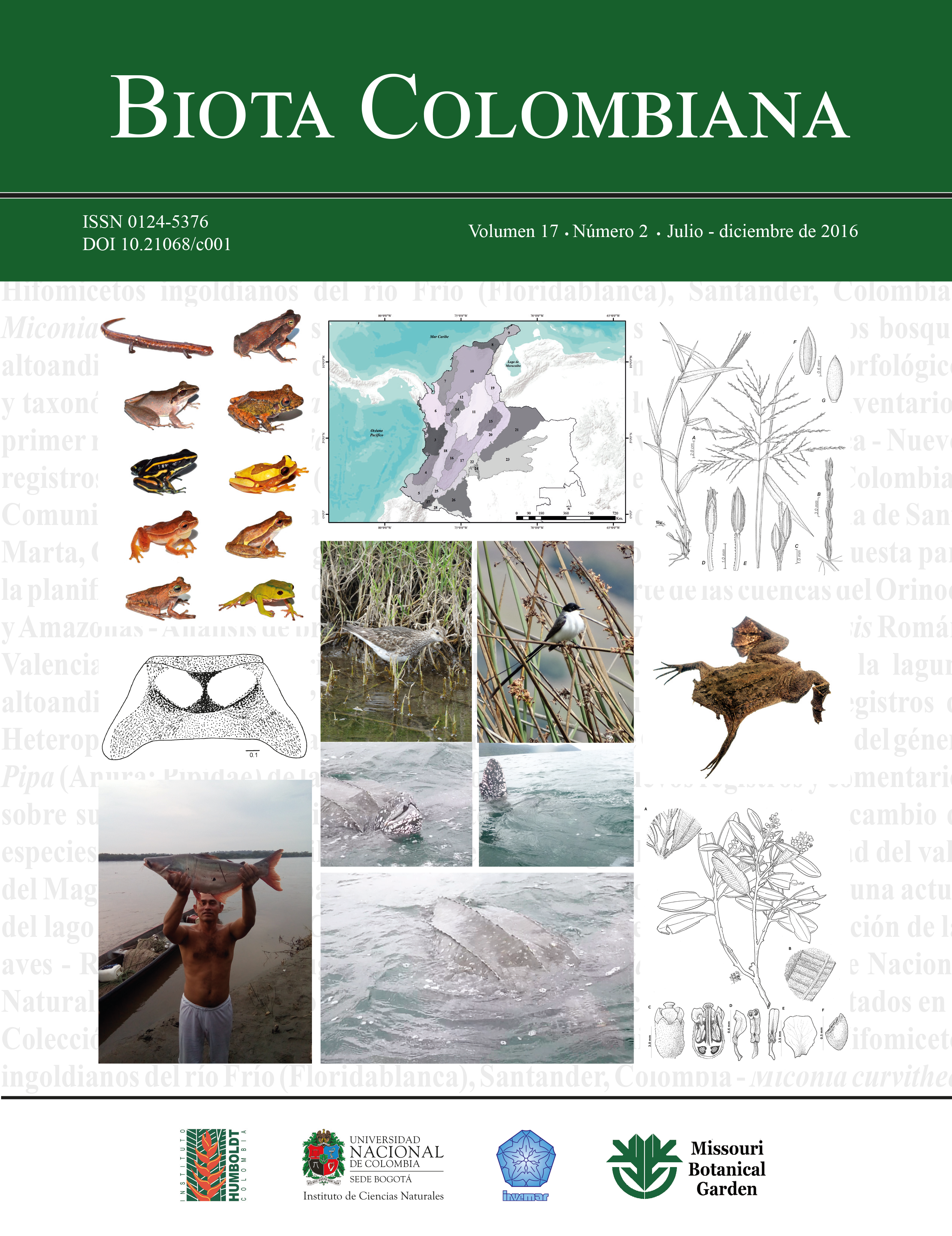Abstract (en):
Abstract (es):
Colombia es un país geográficamente heterogéneo debido principalmente a la orografía andina, la cual propicia una red hidrográfica que combina diferentes órdenes de drenajes, fisiografías y tipos de agua, ubicados en cuatro vertientes: Caribe, Pacífico, Orinoquia y Amazonia. Las zonas hidrográficas o cuencas están clasificadas con base en la divisoria de aguas y han sido tratadas de forma regional solamente en términos de división política para manejar las cuencas por secciones. Una clasificación regional de los ecosistemas dulceacuícolas que conjugue tanto este criterio geográfico como uno biológico, no existe para Colombia, por lo que la planeación territorial y los tomadores de decisiones no contemplan los ecosistemas acuáticos como una unidad en sus pautas de manejo. Por ello, el objetivo de esta investigación fue proponer unidades hidrobiológicas continentales con un criterio hidrogeográfico y biológico, para lo cual se reagruparon las zonas hidrográficas oficiales de acuerdo a la composición íctica, la interpretación de la red de drenaje y las características geomorfológicas de las cuencas. Se proponen 28 ecorregiones: seis para la región Caribe, ocho para la Andina, cinco para la Pacífica y nueve cisandinas (cuatro Amazonas y cinco Orinoco). Estas ecorregiones pueden usarse como una herramienta de planificación territorial.
Keywords:
Biogeography, Fish, Hydrobiological areas, Hydrological areas, territorial planning (en)
How to Cite
The works published in the journals of the Alexander von Humboldt Biological Resources Research Institute are subject to the following terms, in relation to copyright:
1. The patrimonial rights of the published works are assigned to Instituto de Investigación de Recursos Biológicos Alexander von Humboldt. The authors or institutions that elaborate the document agree to transfer the patrimonial rights to the Humboldt Institute with the sending of their articles, which allows, among other things, the reproduction, public communication, dissemination and dissemination of works.
2. The works of digital editions are published under a Creative Commons Colombia license:
Creative Commons License
This work is licensed under a Creative Commons Atribución-NoComercial-SinDerivar 4.0 Internacional.
> Attribution - Non-commercial - No Derivative: This license is the most restrictive of the six main licenses, it only allows others to download the works and share them with others, as long as their authorship is acknowledged, but they cannot be changed in any way, nor can they be used commercially.
3. The authors, when submitting articles to the editorial process of the magazines published by the Humboldt Institute, accept the institutional dispositions on copyright and open access.
4. All items received will be subjected to anti-plagiarism software. The submission of an article to the magazines of the Humboldt Institute is understood as the acceptance of the review to detect possible plagiarism.
5. The works submitted to the editing process of the magazines of the Humboldt Institute must be unpublished.


















